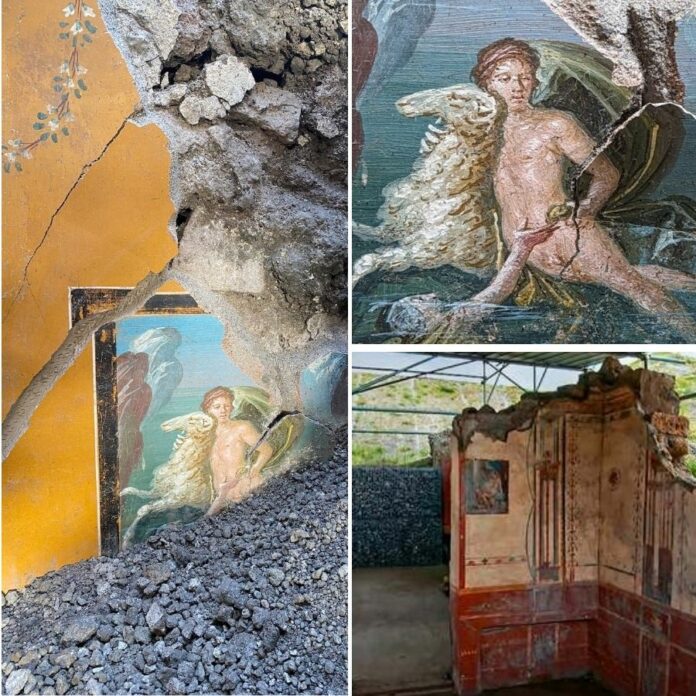A vivid fresco depicting the Greek mythological siblings Phrixus and Helle has been unearthed in the ancient Roman city of Pompeii. Found during restoration work in the House of Leda, the fresco’s striking colors and intricate detail remain remarkably preserved after more than 2,000 years. This discovery not only highlights Pompeii’s artistic legacy but also resonates with timeless human themes of survival and displacement.
The Discovery
The fresco was uncovered in the ongoing excavations of the House of Leda, a site already famous for its ornate artwork. Painted as though framed and hung on a yellow wall, the scene captures the moment Phrixus and Helle flee on the back of a magical ram with the Golden Fleece. Helle is shown on the verge of falling into the sea, while Phrixus clings to the ram, continuing his journey.

Gabriel Zuchtriegel, director of the Pompeii Archaeological Park, praised the discovery, noting its relevance to both historical and contemporary narratives. “History has repeated itself,” he remarked, drawing parallels between the siblings’ plight and modern issues of forced migration.
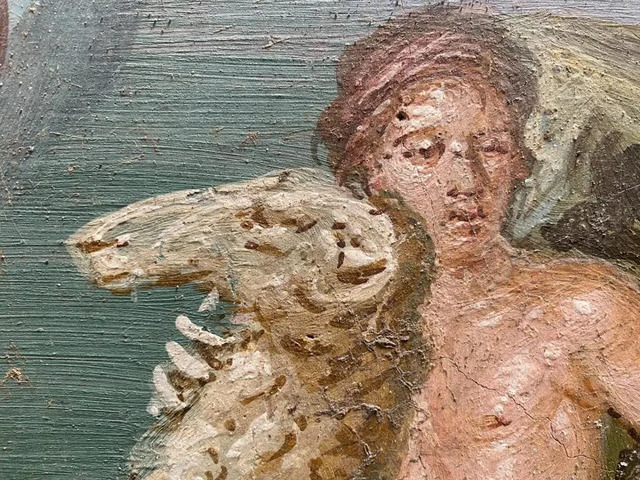
Alongside this fresco, the site has revealed other artistic treasures, including still-life images and portraits of women. The excavation at the House of Leda began in the 18th century and was renewed in 2018 with the goal of reconstructing a comprehensive plan of the mansion. These efforts reflect broader initiatives to preserve Pompeii’s heritage while making it accessible to the public.
The Myth of Phrixus and Helle
The fresco illustrates a key moment in the myth of Phrixus and Helle. According to Greek mythology, the siblings were forced to flee their home to escape the wrath of their stepmother, Ino. They embarked on their journey with the help of a magical ram gifted by the gods. However, tragedy struck when Helle fell into the sea, giving rise to the Hellespont, the modern-day Dardanelles.
Zuchtriegel describes the siblings as “two refugees at sea,” emphasizing the universal themes of the myth. Their story of exile and survival resonates across cultures and eras, offering a poignant reflection on human resilience in the face of adversity.
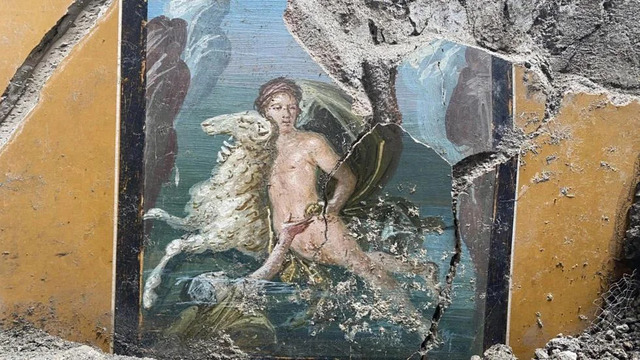
Artistic and Historical Significance
The fresco stands out for its artistic detail and vibrant colors, which have endured through centuries of volcanic ash and debris. The framing technique, designed to make the painting appear as if it were a standalone artwork, adds to its visual impact.
This discovery contributes to our understanding of Roman appreciation for Greek mythology and storytelling. Roman artists often adapted Greek myths, imbuing them with their own cultural context while preserving their narrative essence. The Phrixus and Helle fresco joins a rich collection of mythological art in Pompeii, showcasing the city’s role as a cultural crossroads in the ancient world.
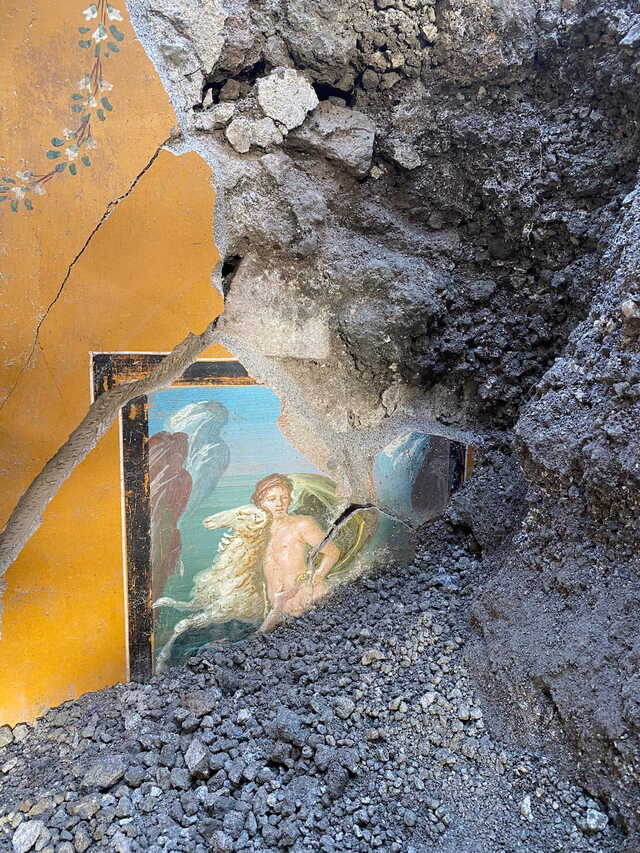
Excavation and Preservation Efforts
The excavation of the House of Leda is part of a broader effort to preserve Pompeii’s treasures. In 2013, UNESCO warned that the site was at risk of being classified as a heritage site in peril, prompting Italian authorities to ramp up preservation initiatives. These efforts have included not only safeguarding existing artifacts but also uncovering new ones, like the Phrixus and Helle fresco.
The city, famously destroyed by the eruption of Mount Vesuvius in CE 79, attracts millions of visitors annually. This latest discovery adds to the allure of Pompeii, offering fresh insights into the artistic and cultural life of its inhabitants.
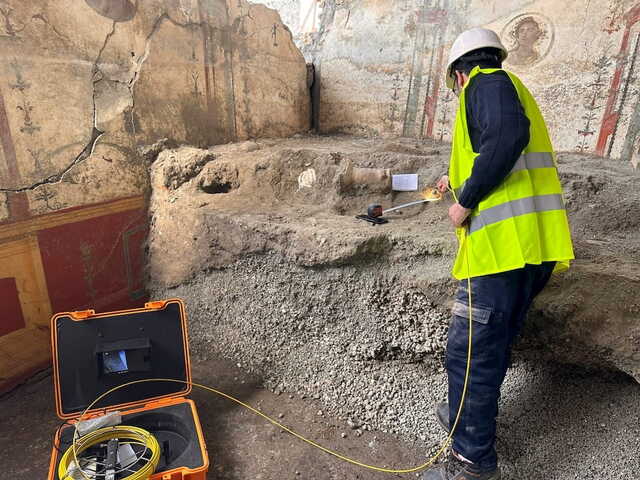
Broader Implications
The rediscovery of the Phrixus and Helle fresco underscores the enduring relevance of mythological themes. Stories of displacement, resilience, and the quest for safety remain as poignant today as they were in antiquity. The fresco also highlights the cultural exchange between Greece and Rome, showcasing how myths transcended borders and influenced artistic expression across civilizations.
Recent finds in Pompeii, such as the Nativity-style statuettes and a still-life fresco resembling a modern pizza, further demonstrate the city’s wealth of artistic and cultural heritage. Each discovery adds a new layer to our understanding of ancient life, connecting us to the stories and traditions of the past.
Conclusion
The Phrixus and Helle fresco is more than a stunning piece of art; it is a testament to the timeless power of storytelling. By bridging the gap between ancient and modern narratives, it reminds us of the shared human experiences that transcend time and place. As Pompeii continues to reveal its secrets, this discovery stands as a vivid reminder of the city’s role in preserving the art, culture, and history of the ancient world.
